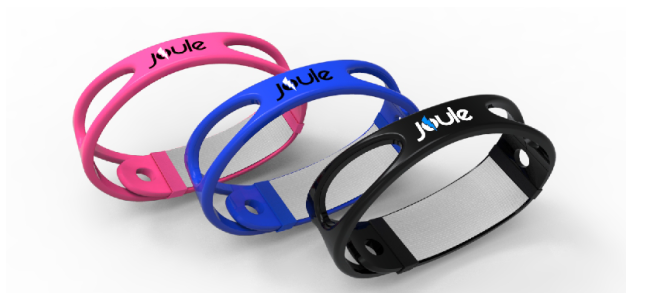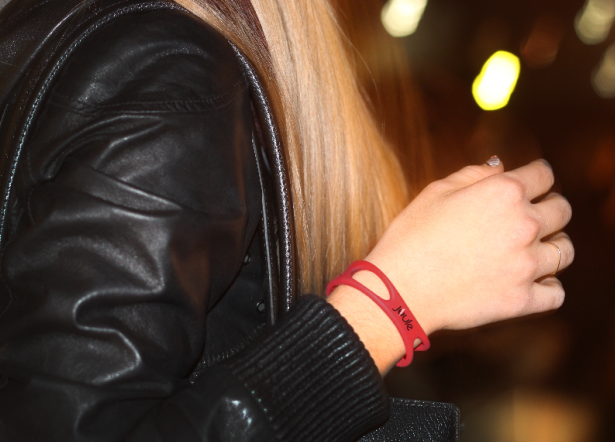The New Way to Avoid Coffee-Stained Teeth

Photo: Good Vibrations Images/Stocksy
How can you get the caffeine your body craves but keep your pearly whites coffee-stain free? It’s all in the wrist, according to the creators of the Joule Caffeine Bracelet.
STORY: Help! My Teeth Are Yellow
The silicon accessory, out this July, features a slot containing a removable patch that delivers caffeine straight into the wearer’s bloodstream through the skin on her wrist. That’s right: You get the kick of coffee without a single sip.

(Photo: Joule)
“These patches work in a similar fashion to a Nicotine patch or other transdermal medication patches,” explains a description on the Toronto-based company’s page on crowdfunding site Indiegogo. “The caffeine is administered gradually for a steady supply.”
STORY: The Real American Dream is Straight, White Teeth
Indeed, each patch — which provides the caffeine equivalent to one medium-size coffee — lasts for four hours. (A pack of 30 for the bracelet, available in the form of a watch too, costs $29).

(Photo: Joule)
And while research has found that such patches do work, experts tell Yahoo Beauty that with this bracelet’s patches, it is still simply too new to really tell. “Certainly there are products that very successfully deliver to the body through transdermal methods,” says Ranella Hirsch, a Boston dermatologist and former president of the American Society of Cosmetic Dermatology and Aesthetic Surgery, citing blood pressure medications, estrogen hormones, and the Nicotine patch. “Whether this is in that category will remain to be seen.”
If the bracelet works, “it’s another option” to consider alongside the spray forms of caffeine and the pills, adds the assistant clinical professor of dermatology at Boston University School of Medicine. But is it a safe choice?
The accessory is an “extremely safe way to get your caffeine fix,” the creators, for one, declare on their crowdfunding page. Joshua Zeichner, director of Cosmetic and Clinical Research in Dermatology at Mount Sinai Medical Center in New York City, isn’t completely convinced, though — especially if women wear the bracelet a lot.
“Long-term use of anything that has a systemic effect should be monitored by your doctor to make sure there are no potential interactions with other medications or health conditions,” says Zeichner. The interactions he worries about include: High blood pressure, an abnormal heart rhythm, and seizures.
Doris J. Day, a clinical assistant professor of dermatology at NYU Langone Medical Center in New York City, also raises a red flag, presuming that “most people will still have a cup of coffee” while wearing the bracelet. Doubling up, she explains, raises caffeine consumption to a crazy high. “It could be a real problem if you don’t watch that dosage,” advises Day. “You’re at risk of overdose because you don’t feel it going in. You may end up being jittery and have heart palpitations.”
The bracelet’s straight-to-blood patches are “really meant to be a way of drug delivery, and that’s a whole different ball game” than downing a cup of Joe that goes through the digestive system, Day says. Caffeine patches “should be used for specific people, for a specific reason,” she insists. “If you work nights for short period of time, or if you have to adjust to different time zones, I could see [wearing one]. But I wouldn’t trust a person’s judgment to say, operate on me, if using this regularly.” A cup of coffee is, after all, enjoyed “with all of your senses: smell, taste, et cetera,” she says, “and that affects the quality of the experience — and how it effects you.”
(Top photo: Thinkstock/DMBaker)

